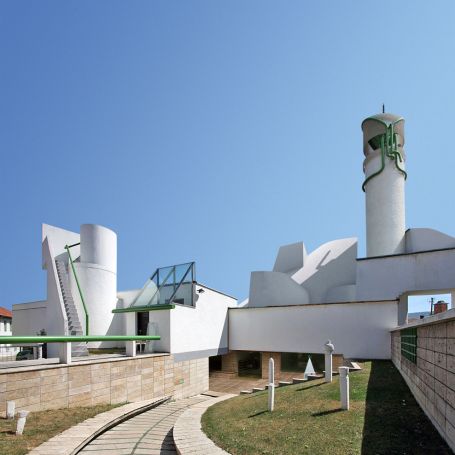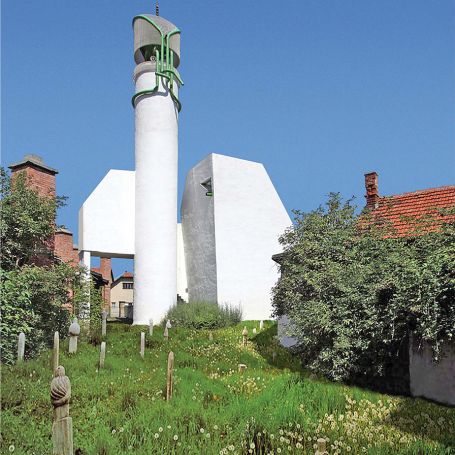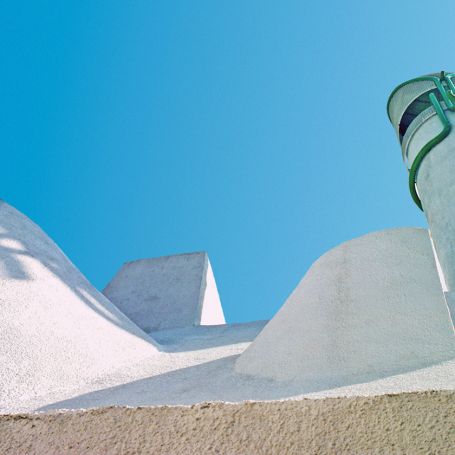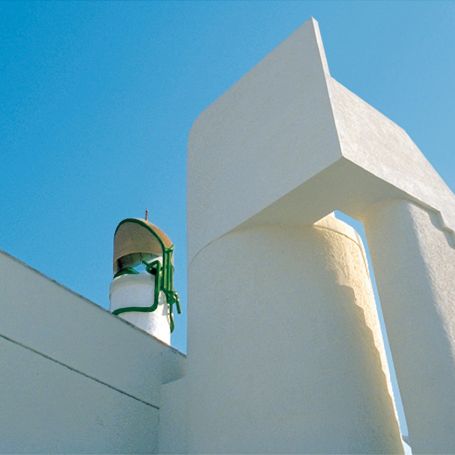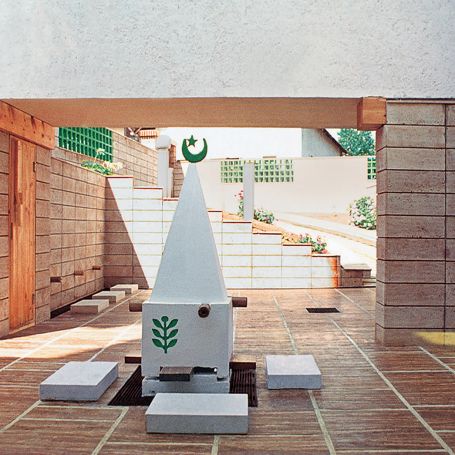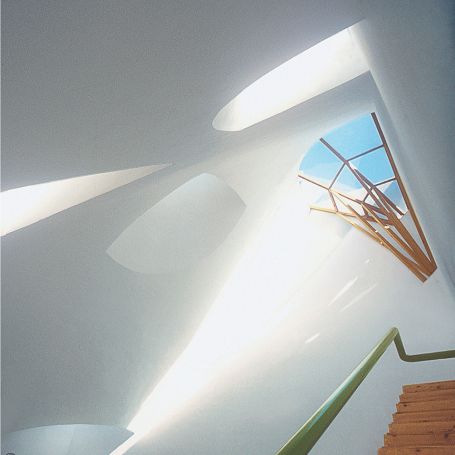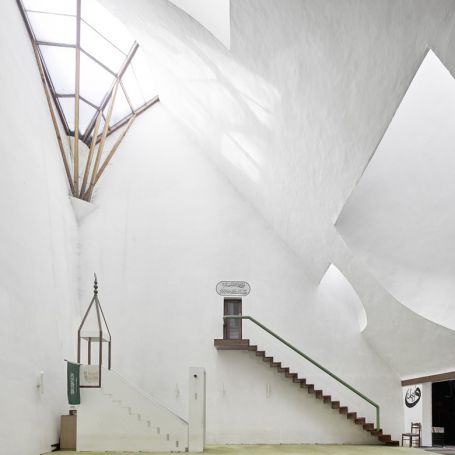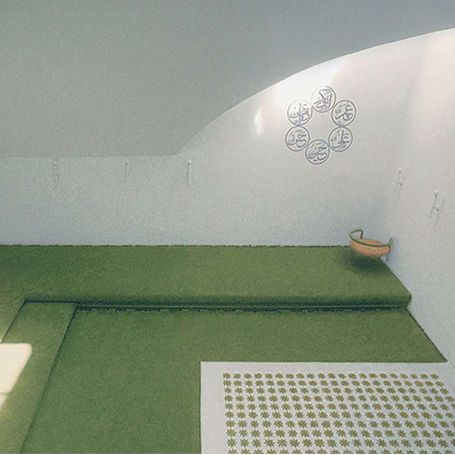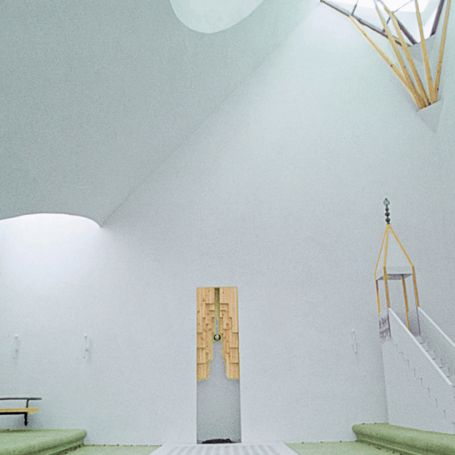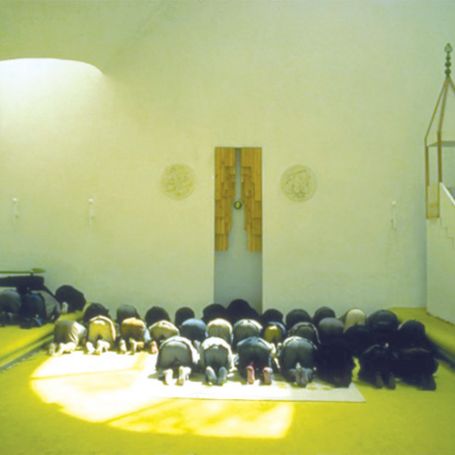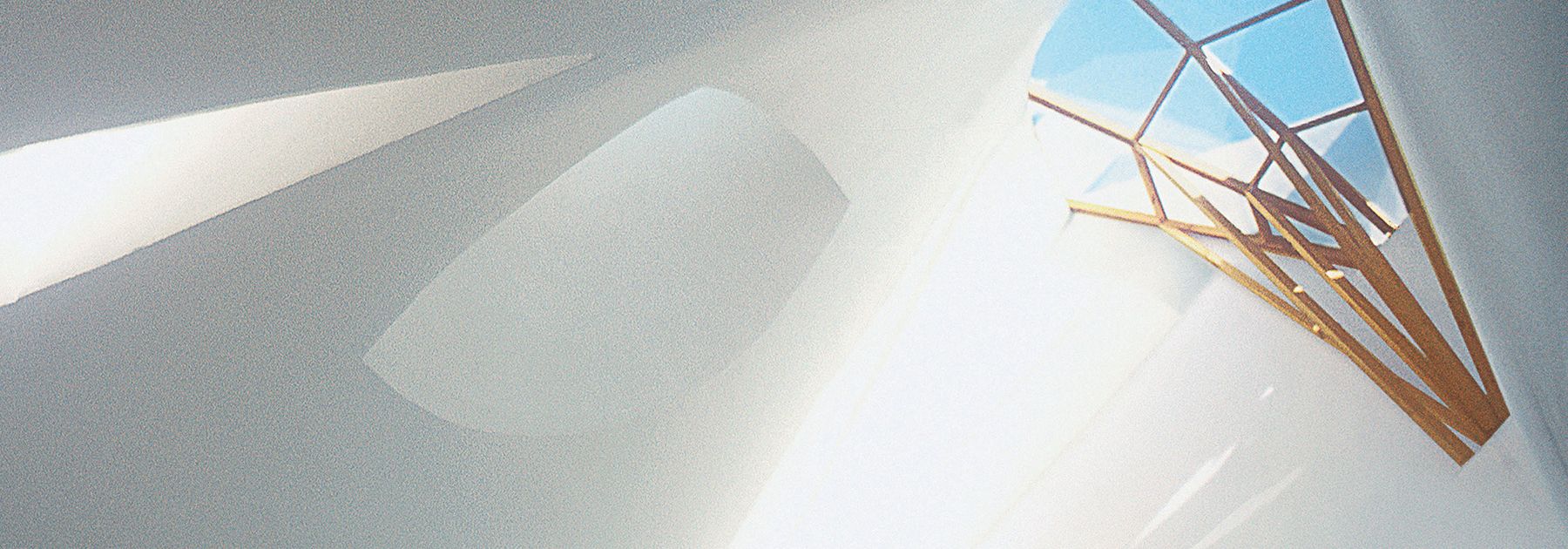
White Mosque
1969, VisokoA+U
(Japan), No.209, page 19, February 1988
The hemisphere of the original dome is set on a cuboid base, but this is interpreted as a quadratic ground plan from which rise the planes of the pyramid, gradually merging into a continuous, conic form. The logical hybrid thus created is then deconstructed, both horizontally and vertically. This is a fragment, but a generic fragment, which is further stratified so that the central corpus (cf. St. Sophia) is reproduced by reference to convention in a series of smaller, identical domic forms.
There has thus been created a calotte of great plastic vitality, dynamically inclined towards the southeast (in the direction of Mecca and thus of prayer). For all the five domic forms, by day and night, sources of light for the space set in the ground and without openings on the lateral walls. Accordingly, the base of the mosque is sunk into the ground to the level of one storey in order to contrast the descent underground into the dark with the stunning space of vertical orientation, gleaming from the zenith. Natural daylight is complemented by artificial light from reflectors. That light is caught in the abstract whiteness of all interior surfaces, the total impression of which is of an at once aesthetic and sublime apotheosis of light.
